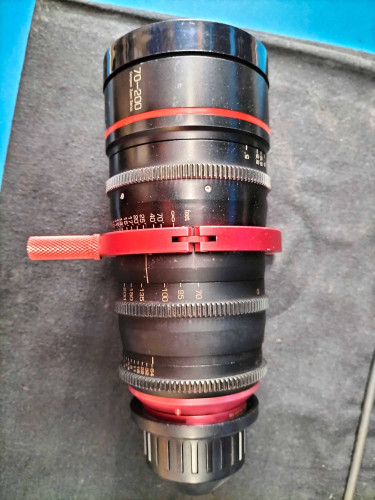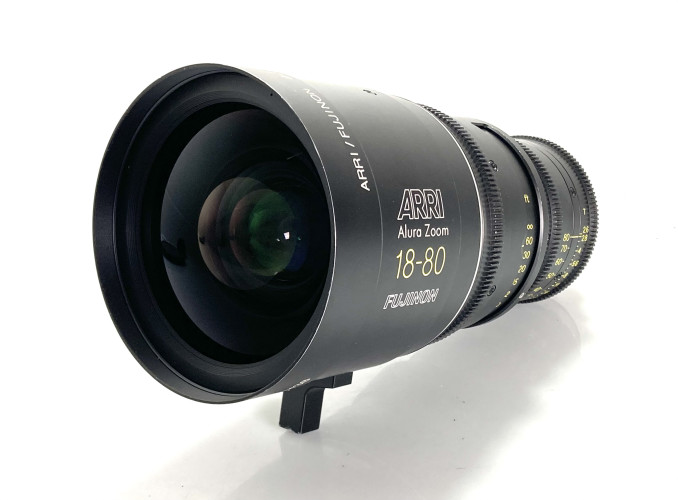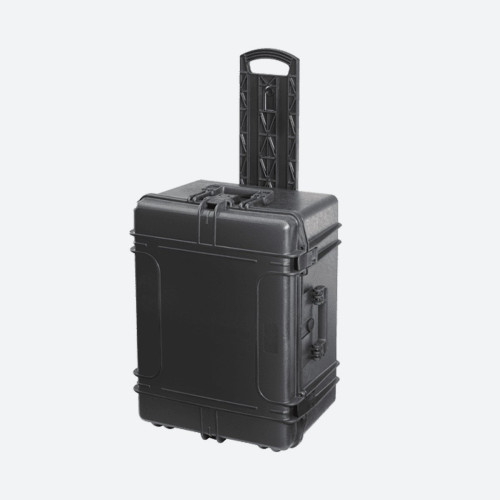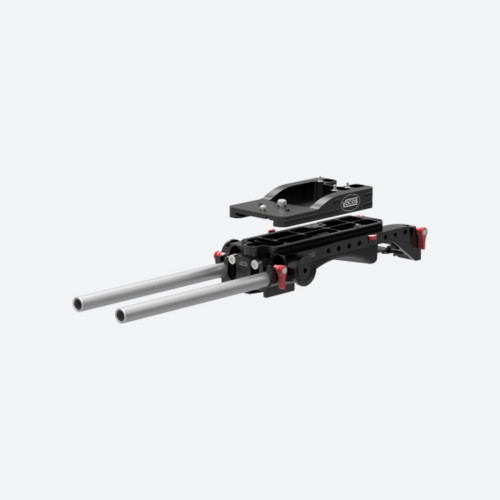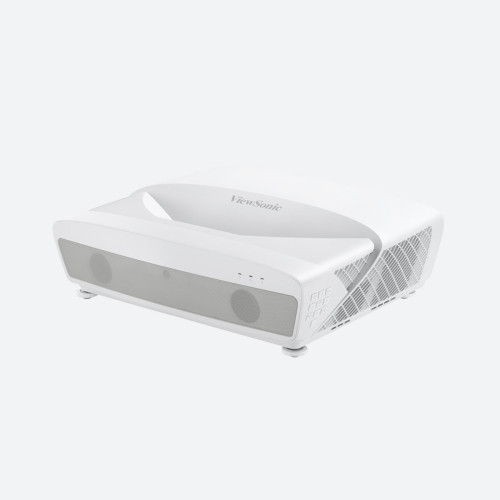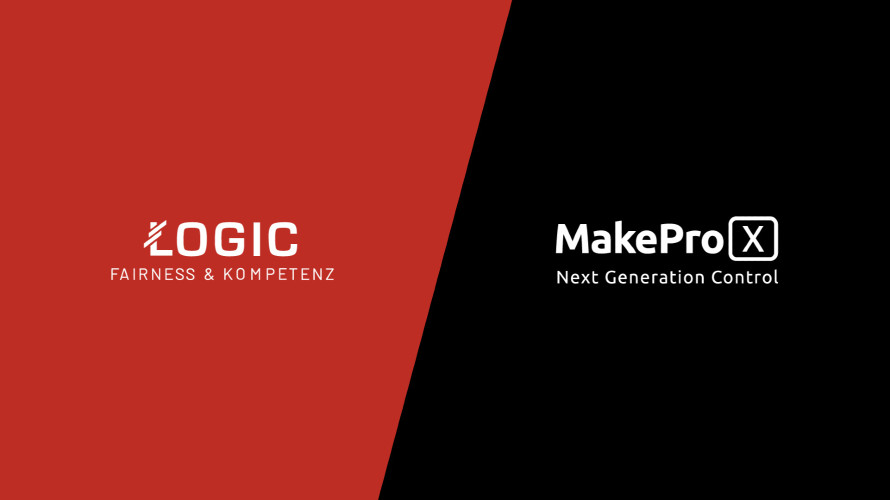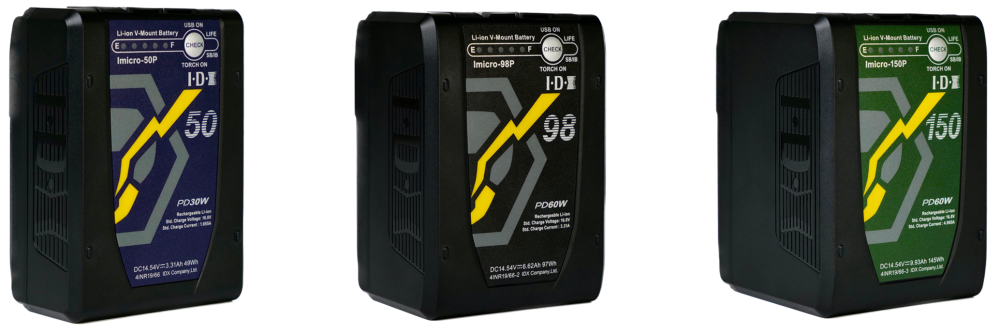1. Why do some manufacturers sell NiMH batteries?
NiMH batteries have a number of clear advantages versus other cell chemistries and we believe and see that this cell chemistry complements the standard Li-Ion range. Indeed some customers choose to use only NiMH.
The main areas of benefit are weight and balance. A strong minority of cameramen see camera balance as a key priority. With two-thirds of camera weight in front, especially with the new HD lenses, shooting for longer periods off of a tripod is a strain; the arm needs to hold up weight causing back tension, which over time can cause health issues. The next benefit is safety: ENG crews with high capacity cameras and on-board lights travel frequently. However, travel with Li-Ion batteries involves restrictions. While batteries between 101 and 160 watt hours can be carried on-board or checked with varying limitations, those over 160 watt hours are completed banned from passenger airplanes. (It’s always best your airline before departure.) On the other hand, NiMH batteries pose no limitations to check with and can be shipped and checked without restriction.
NiMH batteries generally have a less than stellar reputation in the video market, due to the poor performance of the older NiMH, NPs and many other batteries. The reason for this is that most manufacturers do not charge and balance these batteries correctly, using only primitive voltage cut-off algorithms that potentially burn out a NiMH cell. Anton/Bauer specializes in specific temperature cut-off algorithms combined with a balancing mode giving NiMH batteries a radically longer lifecycle, resulting in a better cost value and longer warranties.
2. My batteries are over two years old. How do I know if they are still OK?
The age old question! Mostly all batteries start off great but then decline at different rates, according to your application, treatment, the environment and the battery manufacturing process (clean room, matched cells, tooling tolerances, etc). Push button LED’s tell you if a battery is full or empty – similar to a car fuel tank. The problem is that the definition of full is misleading. An old battery charged to full might have 5% of its original capacity (i.e. the fuel tank shrinks); it is no longer a 60 liter tank but, rather, now a five liter tank. For the most part, that information is useless. A full LED leads the user to believe he has 100% battery power, only to run low mid-shoot. I recommend a display that shows remaining run-time at a current load in hours and minutes. Also, a RealTime® battery allows aging control by using a default load – 20W – when in hand. For example, a new 80W battery will show four hours run-time. If the battery is two years old and has declined to 70W, the display will show three and a half hours. If it shows two hours, the battery has only 40W – and experience says replace that battery.
The best practice is, of course, to have a test charger that runs a complete discharge/charge cycle and records the battery parameters and discharge curves which makes it easy to identify loss of capacity, capacity trends, low voltage and cell imbalance.
3. What are the latest developments in battery technology?
Li-Ion batteries will remain the lead technology for coming years. However, while their use was formerly limited by cell types, there is now an influx of choice, and different chemical mixes on both the Anode and Cathode side, with the goal of improving load capability, lifecycle, charge time, and safety.
The latest high-current cells have effectively solved load issues with 10 amp capability becoming standard in the coming years. Life expectancy has also improved three fold in the next generation of cell technology which incorporates new chemicals such as Manganese and Nickel. Also common are Lithium, iron and sulfate, but low voltage issues make these less suitable for 14.4V video applications. Fast charging cells are now on the horizon, but most are still associated with various draw backs related to price, capacity, and voltage level. Safety will remain an issue for the foreseeable future.
4. What are the safety issues on Li-Ion?
The safety issue is that Lithium in its metallic form is a highly volatile chemical. In its Ionic form it is more stable, but the electrolyte has a very low flash point and can revert to a volatile form under certain conditions such as over discharge or putting the battery in a low-voltage condition. A part reversion to the metallic form becomes dangerous when the cell is exposed to heat. Charging causes heat. Over voltage causes a massive build-up of cell pressure, leading to a cell venting flammable material onto electronics. The rupturing of cells can also lead to sudden short circuit and potential explosion. Incidents with Li-Ion cells are common; laptop batteries have been recalled with massive costs. One major U.S. corporation, for instance, lost $500 million on such a recall. A Japanese broadcaster, too, had a serious fire, involving a generic brand Li-Ion battery, also on sale in Europe under various names, in early 2010.
We do consider a number of batteries currently selling in the UK as clearly potentially dangerous.
5. Why is there such a big price differential in batteries?
Although cells appear to all look the same (what most have probably already experienced as a consumer with AA cells), the quality can be massively different, due to design, materials, machine tooling, ambient conditions, knowledge, etc. The best cell manufacturers invest in clean room facilities, eliminate artifacts in the cell, have precise machine tool tolerances and avoid the internal cell poster effect, issues common with cheaper cells. These types of factors and investments employed in research and development to optimize chemical mixes are simply more expensive.
With a Li-Ion cell pack, the complications grow since they have cell architecture in both parallel and series: the more cells in each parallel string, the higher the capacity of the battery, but the faster the decline due to imbalance potential. To optimize long-term reliability, the pack should ideally consist of balanced cells; however, this matching requires testing and documentation, a much more expensive process than randomly selecting cells. This above all is the key difference between a low- and high-cost solution.
Then come the electronics. In terms of both safety and functionality features, there are numerous choices including component quality and multilayer boards to reduce interference. Housing quality, securing, weld-tab design, conductivity of contacts, wire channeling or pinching, these are all factors that can be considered an investment or a cost cut.
Safety is another factor that can impact cost. Anton/Bauer’s latest generation of Li-Ion batteries not only has safety electronics backing up the primary electronics on a separate board, but we have moved to an internal honeycomb housing to separate each cell, so that cells are isolated preventing Thermal runaway. Does this cost more? Yes. Is it justified? That’s a matter of personal choice.
Finally, one must consider business choices. Do you pioneer solutions or copy them? If you have R&D, service, reliability, a wide accessory range, simple or interactive technology, you need to factor this in, or go out of business. All the above factors contribute to a very different price level, addressing the needs of very different customers. A professional who needs reliability will tend to value a high spec product if budgets allow and there is a track record of success. It’s much like a cameraman; why are some paid and indeed worth more than others?
6. Can I mix chargers and batteries from different manufacturers?
Anton/Bauer does not recommend mixing charges and batteries from different manufactures, and you will see that the higher-end manufacturers do everything possible to avoid this. Crossing brands is usually only feasible if the charging procedure is unsophisticated. If a charger cannot identify what it has on board, simply running current, and subsequently heat into a potentially explosive electronic device is not an advisable idea, especially if, as a manufacturer, you can be held liable for the ensuring damage claims. All Anton/Bauer digital Logic Series® batteries are InterActive®, that means they communicate with the charger, exchanging parameter data, so that the correct charging algorithms can be applied and the relevant charge cut off programs are activated at the correct time.
There are competitors who do try and configure our chargers to charge their batteries using dummy codes. A particularly dangerous case was a high-capacity Li-Ion battery identifying itself as an old NiCad logic battery. NiCad’s can charge to 18V before cut off. Charging a Li-Ion above 16.8V is considered dangerous.
7. What are the benefits of a Gold Mount® versus a Sony V mount?
There a number of aspects to this discussion. Purely mechanically the Gold Mount is a more stable proposition; the physical weight of the battery is spread over a wider surface area triangle than the V-mount triangle, which is also subject to wear since the mechanical contact surface area on the V is tiny. Many cameras come standard with the Gold Mount. However, the Sony camera needs to be converted with a bracket, ideally using original Sony parts. The Anton/Bauer bracket has five mechanical fixation points to the camera, so it is a rock solid fix, allowing use of heavier high-capacity batteries. On the V-Mount, if there is wobble or wear, the battery weight impacts the Sony contacts, with a resulting burnout. The V-Mount inter-compatibility is not really as compatible as it seems. If you compare the Sony material quality with other offerings there are marked tolerances or incompatibilities. Compare the contact bore holes on a Sony battery to many copies. You will see a wide variety, many being clearly narrower. So the pins on those cameras get crushed and in high-current scenarios the burn out potential is increased. If it happens, both a new battery and a new camera back are required. If the contacts are cheap, expect more issues. The Anton/Bauer contacts are gold plated, well over 20A+ capable, self wiping and not known to break.
A bracket also allows us to have separate high-quality PowerTap® (sometimes Hirsose) outputs with accessible fuses, and to incorporate other features such as Automatique® for lighting and mounting points for additional hardware, voltage regulation or hot swap capability.




